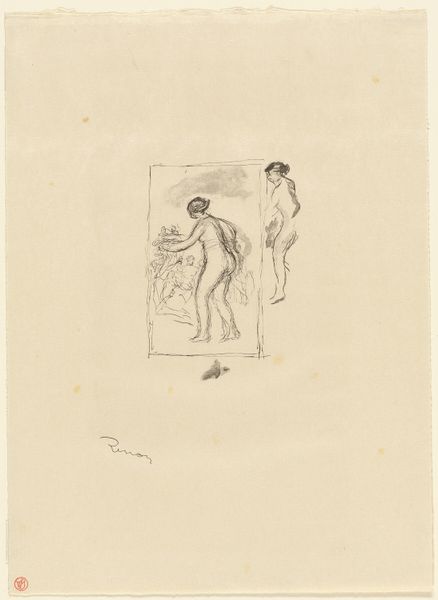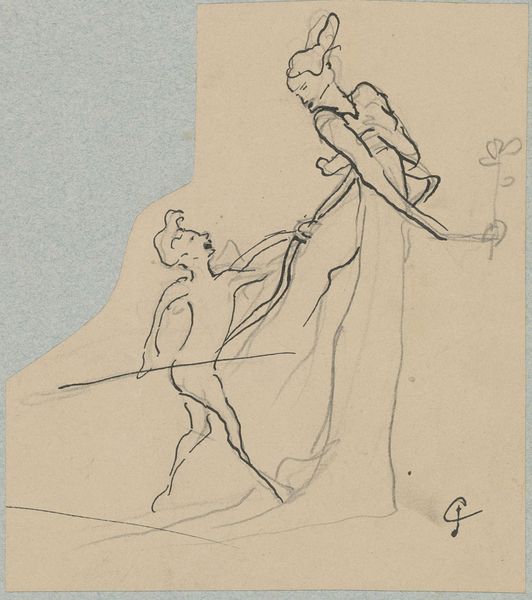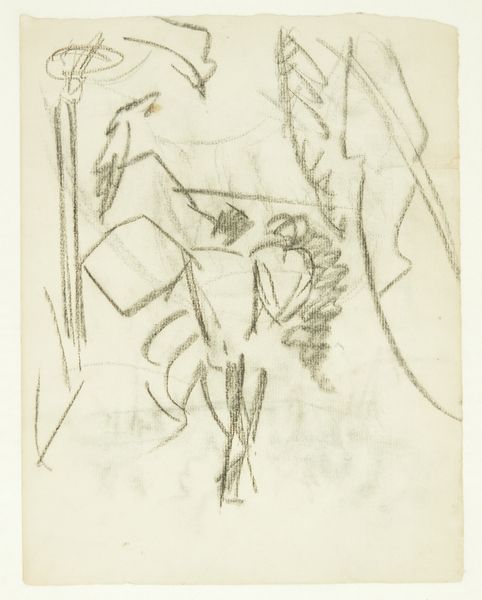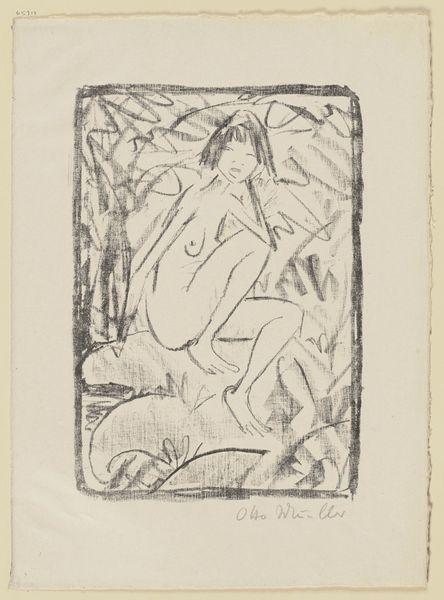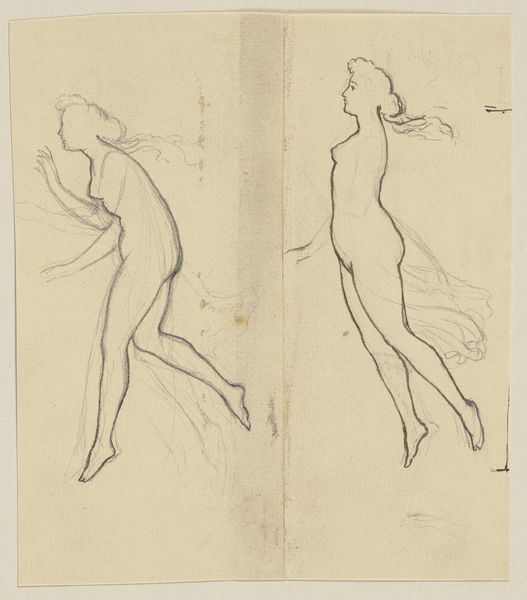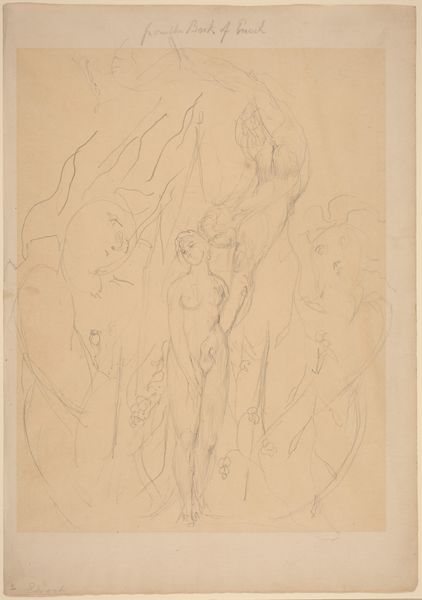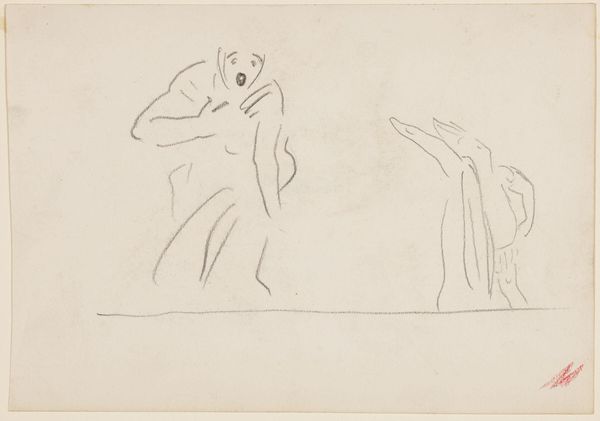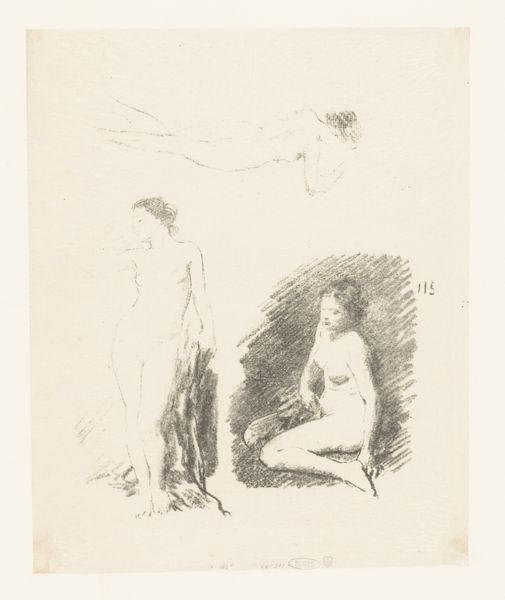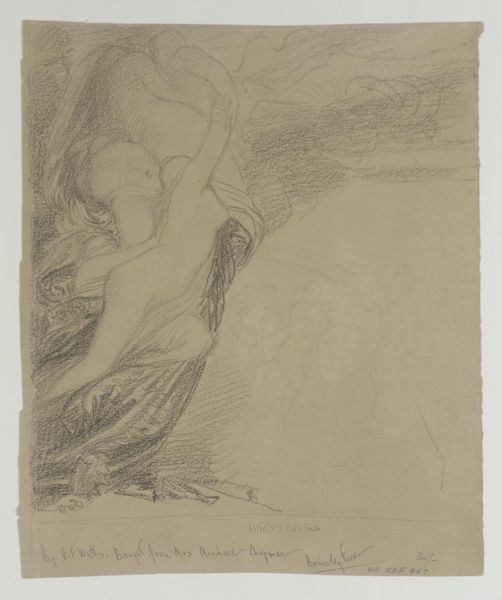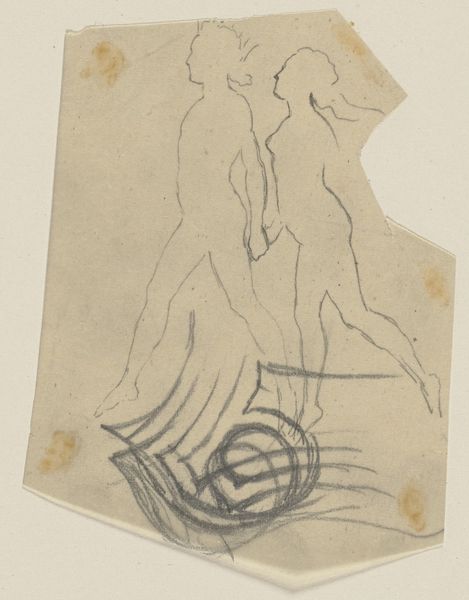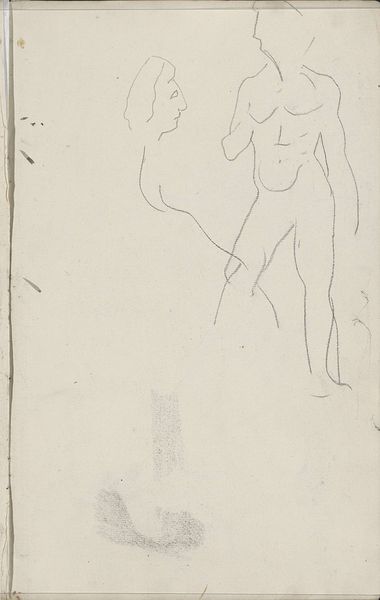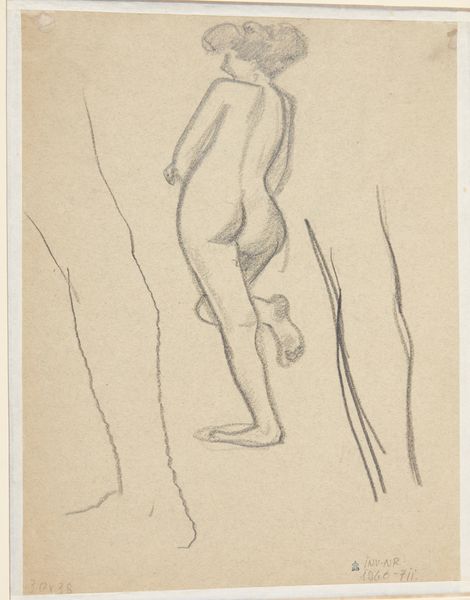
Dimensions: Sheet: 14 3/16 in. × 11 in. (36 × 28 cm) Image: 10 7/16 × 7 7/8 in. (26.5 × 20 cm)
Copyright: Public Domain
Curator: Henri de Toulouse-Lautrec's "Study of a Woman," created in 1893, is currently held at the Metropolitan Museum of Art. It's an etching, a print, giving it this rather interesting textural quality despite its reliance on line. What's your first take on it? Editor: I'm immediately struck by its intimacy, Curator. There's a palpable sense of privacy, almost as if we're intruding on a moment of personal reflection. The subject’s gaze is directed elsewhere, away from us, adding to this sense of detachment and quiet observation. Curator: Yes, and that intimacy is crafted through very deliberate choices regarding materials. The choice of etching, specifically, implies an accessible method of reproduction, reflecting Lautrec's fascination with portraying scenes of Parisian life available to a wider consumer base. Consider the societal implications of that distribution; this was not meant for just elite collectors. Editor: Precisely! And it highlights Lautrec's role in capturing the Belle Époque's complexities. By making such subjects available via mass production methods like printmaking, his artwork becomes more socially relevant. Were his pieces seen in places like cafes or salons where such scenes played out? I wonder what effect these artworks had in the public sphere. Curator: The raw materiality here really communicates Lautrec's genius; his work in the printing press to disseminate imagery would also have been very time consuming and have specific labor values which contribute meaning. Notice also, for instance, how few lines were necessary to convey shape and light here; so many prints in his age were decorative or reproducible but never artistic masterpieces on this order. Editor: I concur completely! By showcasing moments usually confined to private spaces and sharing them widely through public channels, he encourages discourse regarding conventional perceptions. Did this intimacy blur boundaries? Lautrec's pieces act as windows through which the observer engages with contemporary ethics concerning spectatorship and observation. Curator: Right, the value then isn't solely representational; it resides just as powerfully in the way the etching makes those scenes socially accessible artifacts for a modern audience. Understanding Lautrec’s choice of such accessible materials enriches our perception significantly! Editor: Agreed, examining “Study of a Woman” brings to light some deeper cultural themes; this single, seemingly unposed figure provokes meaningful thoughts concerning the public exhibition and societal ramifications from observation culture then. Curator: I come away admiring both his skills and that period's dynamic tensions reflected and embedded right here through the choices of lines and materials he uses! Editor: Likewise, reflecting over this woman through Toulouse-Lautrec’s work reminds of those pivotal epochs influencing both artistic creation alongside society during their formative ages collectively still too.
Comments
No comments
Be the first to comment and join the conversation on the ultimate creative platform.
